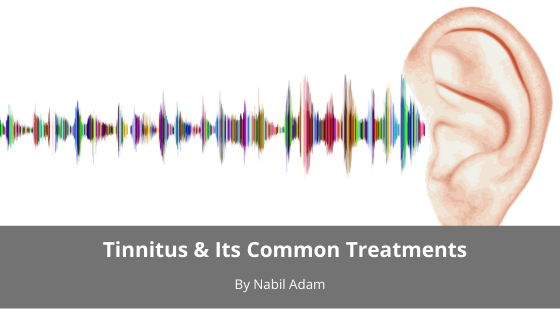Those who have hearing loss are often the last to realize it, but other hearing issues are more obvious to the sufferer. One such problem is tinnitus, commonly referred to as “ringing in the ears.” Most people have experienced a temporary bout of tinnitus, but for those with chronic tinnitus, it can have mental and physical repercussions.
While tinnitus is defined by the perception of sound that has no external source, different people may experience different sounds. For some, it can take the form of chirping, hissing, humming, or buzzing. Others may experience roaring, whistling, or even shrieking. Sometimes the sounds may appear to come from one ear while others experience the noise in both ears. The sound can be intermittent, or constant, pulsating, or steady. For some individuals, the sounds seem to come from a distance while others perceive the sounds coming from an internal source.
Tinnitus itself is not a condition, but rather a symptom of an underlying issue. It can be the result of an ear injury, circulatory system disorder, or age-related hearing loss. Though it can be extremely annoying, tinnitus isn’t typically a sign of a serious condition.
There are two different forms of tinnitus, subjective and objective. Subjective tinnitus is when only the affected individual can hear the noise. This is the most common form of tinnitus. It can be the result of problems in your inner, middle, or outer ear. It can also potentially be the result of issues with the auditory nerves in your brain, which interpret signals as sound.
With objective tinnitus, your doctor will be able to hear the sound during the exam. This is rare and is generally the result of problems with blood vessels, muscle contractions, or a middle ear bone issue.
Sometimes tinnitus will disappear on its own. However, when it does not, individuals seeking relief should begin with treating the underlying condition that is causing the tinnitus. If tinnitus continues after treatment of the primary condition, there are non-medical options to mask or reduce the noise. It is important to note that, in some cases, tinnitus will not go away or be reduced regardless of the cause.
Masking devices look similar to hearing aids. These devices emit a sound that is more pleasant than the noise of the tinnitus.
Another treatment option is Tinnitus Retraining Therapy (TRT), which takes 12 to 24 months to achieve full benefits; however, it has been highly successful. TRT relies on the brain’s natural ability to filter out tinnitus sounds on a subconscious level to prevent conscious perception. This ability is called “habituation,” and it is what people naturally do with sounds such as fans, air conditioners, rain, electronic hums, etc. TRT is a two-part process. First, the individual with tinnitus is exposed to a continual source of neutral sound everywhere they go. While going through this process, the individual receives counseling, which addresses coping strategies.
Cognitive Behavioral Therapy has also been found to help manage tinnitus. This type of counseling helps the individual modify their response to the tinnitus and is often used in conjunction with other forms of treatment. Similarly, a relaxation technique called biofeedback can be applied to tinnitus. Biofeedback is another means of helping individuals manage stress by altering their reaction to it.
Though there are various treatment options and alternative therapies for tinnitus, there’s no fail-proof cure. If you are bothered by it, seeking treatment of potential underlying conditions and counseling are your best means of managing tinnitus.

